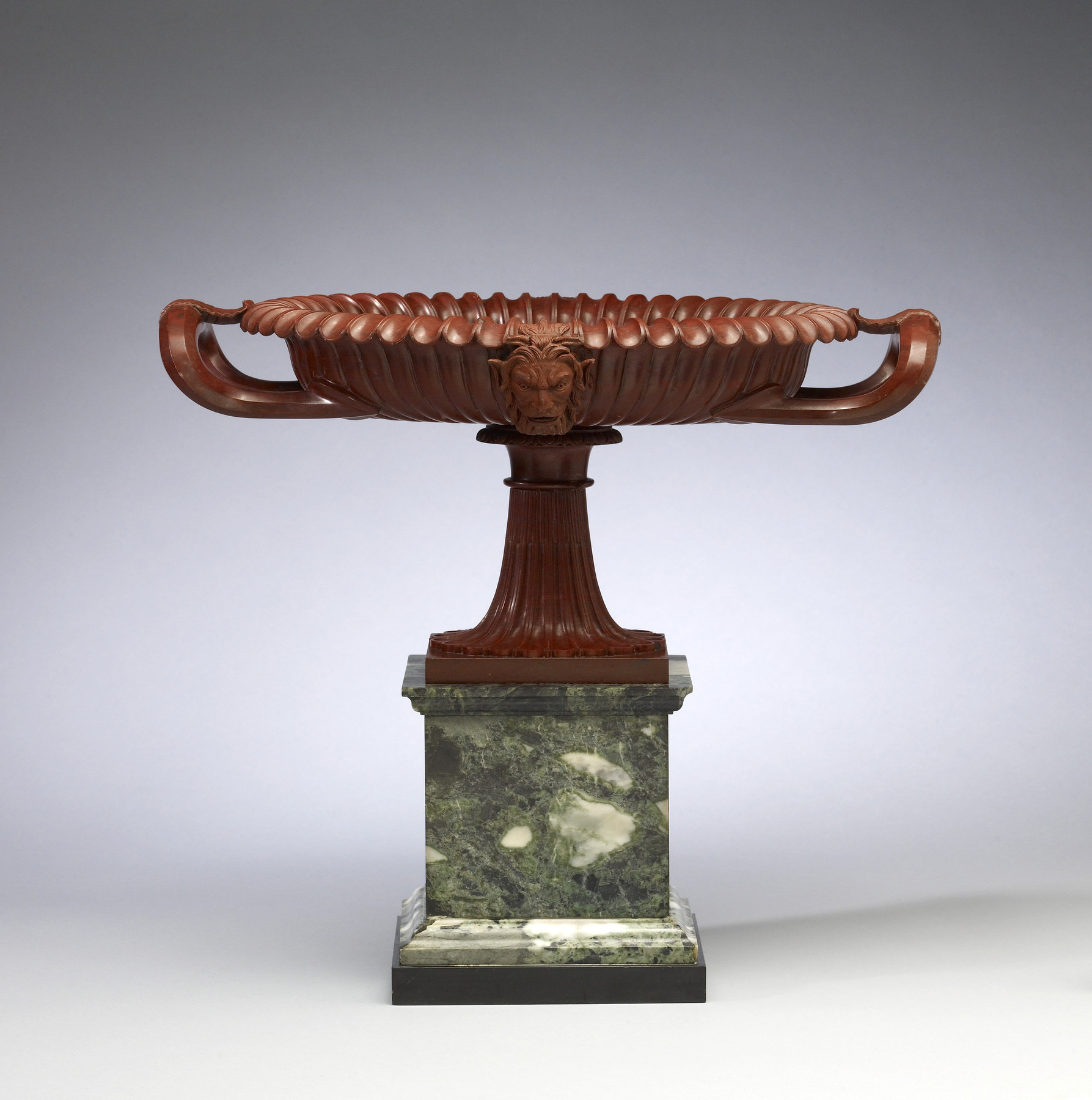Tazza
(18th and 19th Centuries )
As early as 1765, the Russian government sponsored a geological expedition to the Ural Mountains and Siberia that discovered vast amounts of colored marbles and other decorative minerals and stones. Imperial lapidary works were subsequently established in Peterhof, near St. Petersburg, Ekaterinburg, a town in the Urals, and Kolyvan, in the Altai Mountains. From the reign of Peter the Great until the fall of the Romanov dynasty in 1917, numerous European artists and craftsmen traveled to St. Petersburg, attracted by the wealth of the court and the empire's plentiful natural resources.
This "tazza," or saucer-shaped cup, was inspired by an ancient Greek ceramic vase known as a "kylix."
Provenance
Provenance (from the French provenir, 'to come from/forth') is the chronology of the ownership, custody, or location of a historical object. Learn more about provenance at the Walters.
William T. / Henry Walters Collection, Baltimore [date and mode of acquisition unknown]; Walters Art Museum, 1931, by bequest.
Exhibitions
| 2017-2018 | Fabergé and the Russian Crafts Tradition: An Empire's Legacy . The Walters Art Museum, Baltimore. |
| 2003-2004 | The Fabergé Menagerie. The Walters Art Museum, Baltimore; Columbus Museum of Art, Columbus; Portland Art Museum, Portland. |
Conservation
| Date | Description | Narrative |
|---|---|---|
| 8/24/2015 | Examination | Cleaned in preparation for exhibition. |
| 8/24/2015 | Examination | Cleaned |
Geographies
Russia (Place of Origin)
Measurements
Overall H: 13 15/16 × W with handles: 16 1/8 × D: 9 3/4 in. (35.4 × 41 × 24.8 cm)
Credit Line
Acquired by William T. or Henry Walters
Location in Museum
Not on view
Accession Number
In libraries, galleries, museums, and archives, an accession number is a unique identifier assigned to each object in the collection.
In libraries, galleries, museums, and archives, an accession number is a unique identifier assigned to each object in the collection.
41.267










